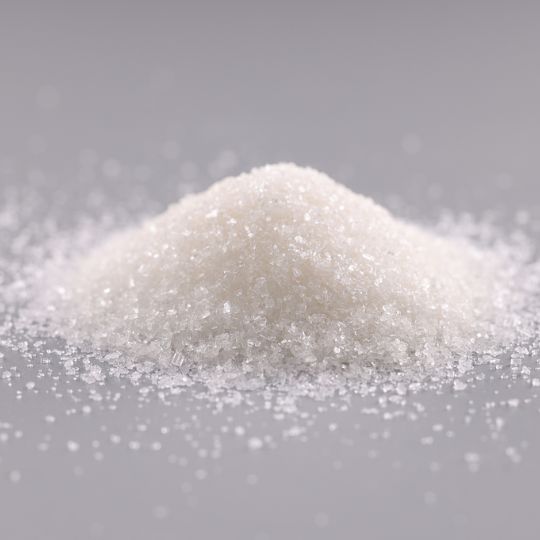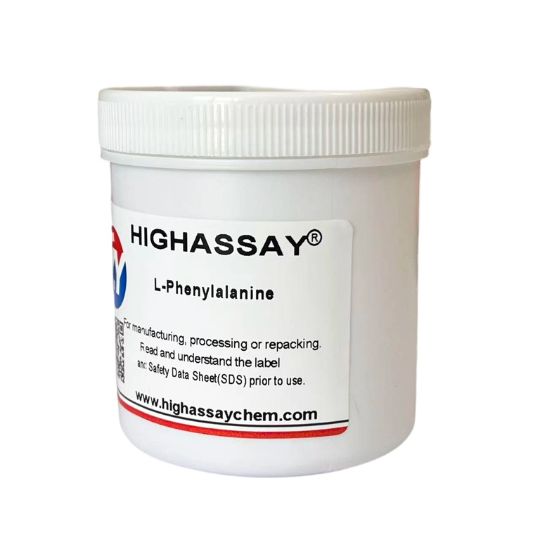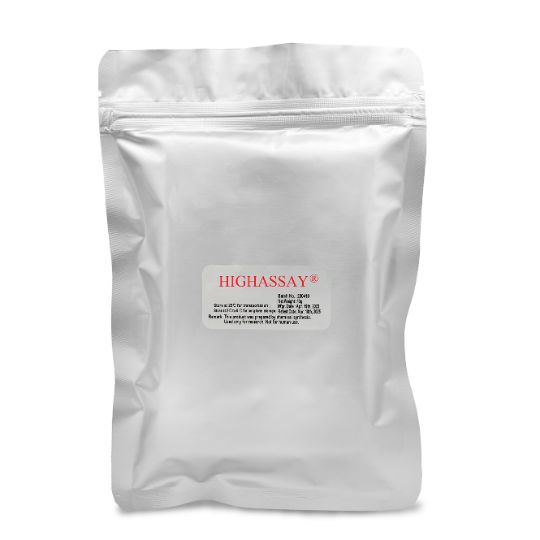What is L-Phenylalanine?
L-Phenylalanine is an essential amino acid, meaning it cannot be synthesized by adults, infants, or animals. L-Phenylalanine is beneficial to the brain and skin. It is used to produce proteins needed by the human body, maintaining normal function. Most protein-rich foods are also rich in L-Phenylalanine. We can obtain it through food or supplements, depending on individual needs.
Benefits of L-Phenylalanine
- L-Phenylalanine supplementation can promote tyrosine synthesis, regulate thyroid hormone levels, and maintain metabolic activity. It also produces dopamine, which regulates mood and improves memory.
- L-Phenylalanine is added to human food and animal feed, not only to improve taste but also to supplement essential amino acids.
- L-Phenylalanine also plays a significant role in the pharmaceutical industry, being used to synthesize anticancer drugs. As a carrier, it penetrates directly into tumors, inhibiting their growth and reducing drug side effects.
- L-Phenylalanine is widely available; it’s found in abundant amounts in any protein-rich food.
If you have any questions about processing L-Phenylalanine, Highassay’s R&D team is here to help.

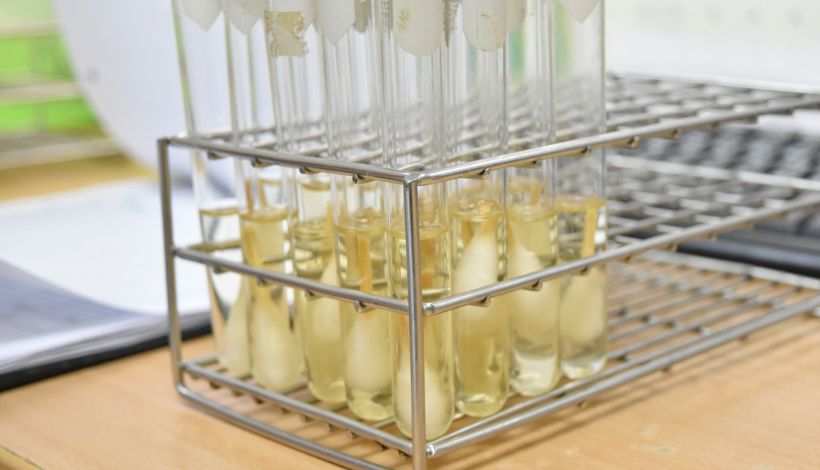
Production Methods of Phenylalanine
Synthetic preparation methods are less efficient, and it’s generally extracted from natural sources. The most common method involves hydrolyzing defatted soybeans with hydrochloride to remove the acidic amino acids contained in the defatted soybeans. L-Phenylalanine is then adsorbed using activated carbon or a decolorizing resin. Finally, a specific solvent is used to dissolve and isolate the L-Phenylalanine. In addition to direct extraction, other methods exist, such as direct fermentation and chemical synthesis.
A Brief Introduction to L-Phenylalanine
Molecular Formula:C9H11NO2
Molecular Weight:165.19
CAS No.: 63-91-2
Appearance:Colorless to white flaky crystals or white crystalline powder
Regular commercial package: 25kg/drum
Application of L-Phenylalanine
Highassay adheres to strict quality control (QC) to produce L-Phenylalanine. Buy L-Phenylalanine in bulk from us now to get competitive market prices.
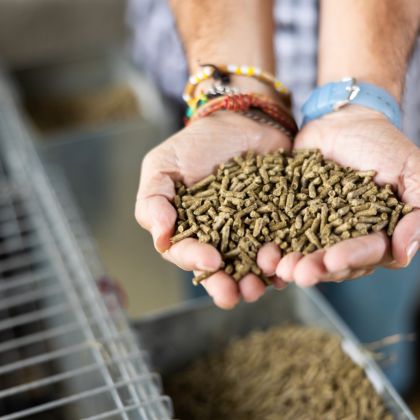 Animal Feed
Animal FeedEffectively promotes growth and boosts immunity. It’s also an essential amino acid that animals cannot synthesize on their own, so it must be supplemented in animal feed.
 Pharmaceutical Industry
Pharmaceutical IndustryA key component in compound amino acid infusions; a carrier for anti-cancer drugs; and for improving the condition of vitiligo patients.
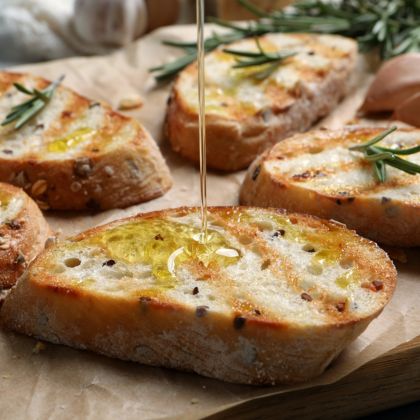 Food Additive
Food AdditiveUsed in baking to improve the flavor and flavor of food while also replenishing the body’s amino acid balance.
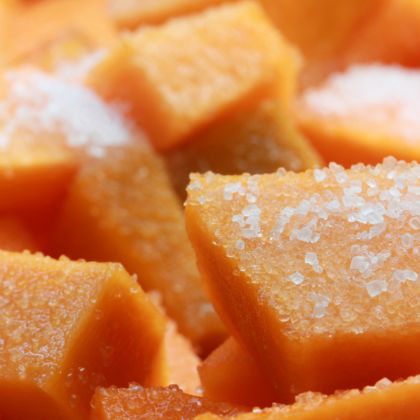 Flavor Enhancer
Flavor EnhancerOne of the main ingredients in aspartame, it offers a pure, high-intensity sweetness.
Specification of L-Phenylalanine
We have some specific usage data and storage information for L-Phenylalanine to share with you.
- Specification of L-Phenylalanine
- Storage of L-Phenylalanine
| L-Phenylalanine | CP2020 | EP11 | USP2023 | AJI92 | FCC11 |
| Assay | ≥98.5% | 98.5-101.0% | 98.5-101.5% | 99.0-100.5% | 98.5-101.5% |
| PH | 5.4-6.0 | / | 5.4-6.0 | 5.4-6.0 | 5.4-6.0 |
| Specific rotation[a]D20 | -33.0°–35.0° | -33.0°–35.5° | / | -33.5°–35.0° | -33.2°–35.2° |
| Specific rotation[a]D25 | / | / | -32.7°–34.7° | / | -32.7°–34.7° |
| Transmittance(T430) | ≥98.0% | / | / | ≥98.0% | / |
| Appearance of solution | / | clear & colorless ≤BY6 | / | / | / |
| Chloride(Cl) | ≤0.02% | ≤0.02% | ≤0.05% | ≤0.02% | / |
| Ammonium(NH4) | ≤0.02% | ≤0.02% | / | ≤0.02% | / |
| Sulfate(SO4) | ≤0.02% | ≤0.03% | ≤0.03% | ≤0.02% | / |
| Iron(Fe) | ≤10PPM | ≤10PPM | ≤30PPM | ≤10PPM | / |
| Heavy metals(Pb) | ≤10PPM | / | / | ≤10PPM | ≤5PPM |
| Arsenic | ≤1PPM | / | / | ≤1PPM | / |
| Other amino acids | ≤0.50% | / | Individual impurities≤0.5% Total impurities≤2.0% | conform | / |
| Ninhydrin-positive substances | / | Each impurity≤ 0.2 % Total impurities≤ 0.5 % | / | / | / |
| Loss on drying | ≤0.20% | ≤0.50% | ≤0.30% | ≤0.20% | ≤0.20% |
| Residue on ignition | ≤0.10% | ≤0.10% | ≤0.40% | ≤0.10% | ≤0.10% |
| Endotoxin | <25EU/g | <25EU/g | <25EU/g | / | / |
| Total plate count | ≤ 1000 CFU/g | ≤ 1000 CFU/g | ≤ 1000 CFU/g | ≤ 1000 CFU/g | ≤ 1000 CFU/g |
| Moulds & Yeasts | ≤ 100 CFU/g | ≤ 100 CFU/g | ≤ 100 CFU/g | ≤ 100 CFU/g | ≤ 100 CFU/g |
| Form | Temperature | Years |
| powder | -20℃ | 3 years |
| 4℃ | 2 years | |
| In solvent | -80℃ | 2 years |
| -20℃ | 1 year |
Groups that cannot supplement L-Phenylalanine
- Patients with phenylketonuria
- Patients with tyrosinemia
- Children sensitive to phenylalanine
L-Phenylalanine VS L-Tyrosine
Most L-Phenylalanine in the body is converted to L-Tyrosine by the enzyme L-Phenylalanine hydroxylase. This L-Phenylalanine then synthesizes other important elements involved in the metabolism of sugars and fats.
L-Phenylalanine VS D-Phenylalanine VS DL-Phenylalanine
After L-Phenylalanine is converted to tyrosine, it is converted into several neurotransmitters, such as dopamine and thyroid hormones, which play an important role in regulating mood and maintaining a good mood. D-Phenylalanine, on the other hand, can break down endorphins, thus relieving pain. DL-Phenylalanine is a laboratory-developed mixture of L-Phenylalanine and D-Phenylalanine in equal proportions. It combines the advantages of both and is often used as a supplement for anxiety, depression, and pain relief.


